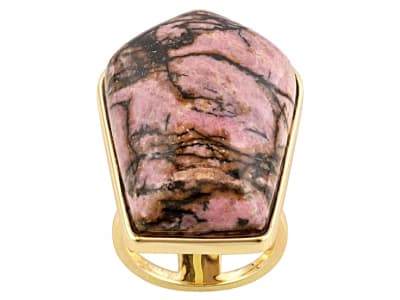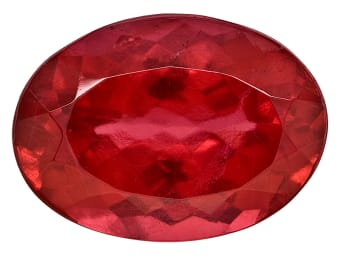Rhodonite is an attractive mineral that is primarily known as an ornamental stone but is often seen in jewelry in the form of beads or cabochons. This mineral easily falls into the category of rare and exotic, making it highly prized by collectors of specimens and gemstones. Its name, derived from two Greek roots, means "rose-colored stone." Rhodonite, which is commonly found in massive or granular forms, is most often translucent to opaque in appearance. On rare occasion, transparent, gem-quality material may be found. Rhodonite's natural color ranges from pink to rose red to brownish red, often with blackish veins throughout.
General Information
LWUV: Inert
Rhodonite Colors
-
 Pink
Pink -
 Red
Red
Alternate Names
Manganese Gravel, Fowlerite
Countries of Origin
Canada; Russian Federation; Sweden; Unknown; China; United States of America; Brazil; Mexico; South Africa; Madagascar; Australia; Peru
Care
Normal, gentle handling on untreated stones.
Species/Variety
Rhodonite (single crystal)
Faceted grade Rhodonite is transparent to translucent and has a vitreous polish luster. It has a pearly luster on cleavage planes. Care must be taken when cutting rhodonite because it exhibits perfect cleavage in two directions. The Brazilian material can produce cat’s-eyes along with transparent gemstones, some of which can exceed 5 carats. Other known locations for gem quality crystals are Australia, Peru, Sweden, and the United States.



